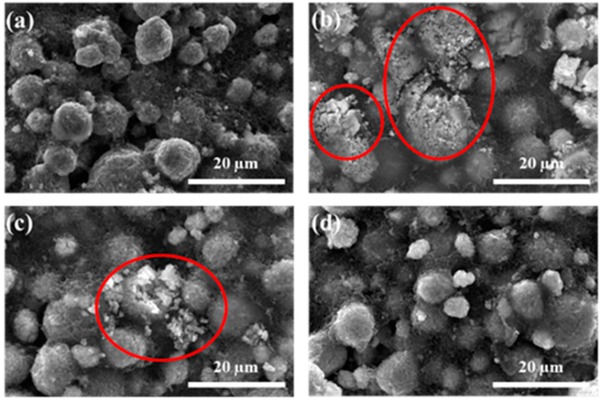Dual-Salts Electrolyte with Fluoroethylene Carbonate Additive for High-Voltage Li-Metal Batteries
Feature Paper: Journal Title Story

The combination of Li-metal anode and high-voltage cathode is regarded as a solution for the next-generation high-energy-density secondary batteries. However, a traditional electrolyte is either incompatible with the Li-metal anode or vulnerable to high voltage. This work reports a 1 M dual-salts Localized-High-Concentration-Electrolyte with Fluoroethylene carbonate (FEC) additive. It enables stable cycling of Li||LiNi0.8Co0.1Mn0.1O2 (NMC811) battery, which shows 81.5% capacity retention after 300 cycles with a charge/discharge current density of 1 C and a voltage range of 2.7–4.4 V. Scanning electron microscopy (SEM) images show that this electrolyte not only largely reduced Li dendrites and ‘dead’ Li on anode surface but also well protected the microstructure of NMC811 cathode. Possible components of both solid-electrolyte interlayer (SEI) and cathode-electrolyte interlayer (CEI) were characterized by energy-dispersive X-ray spectroscopy (EDX). The result illustrates that FEC protected Li salts from decomposition on the anode side and suppressed the decomposition of solvents on the cathode side.
